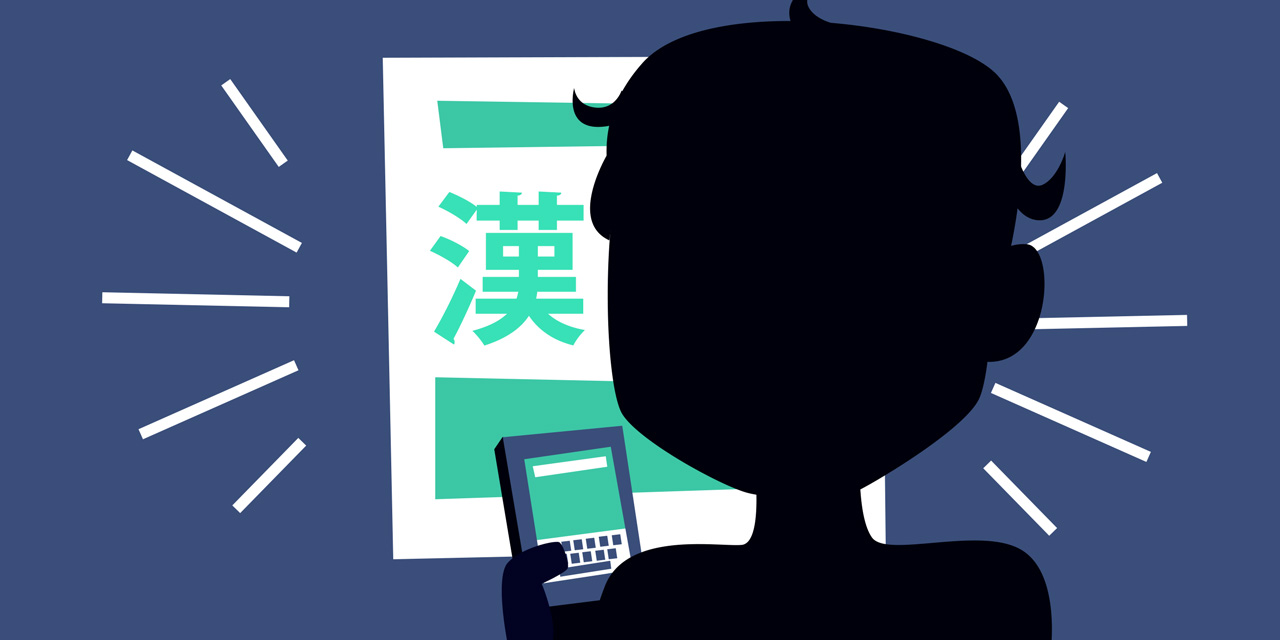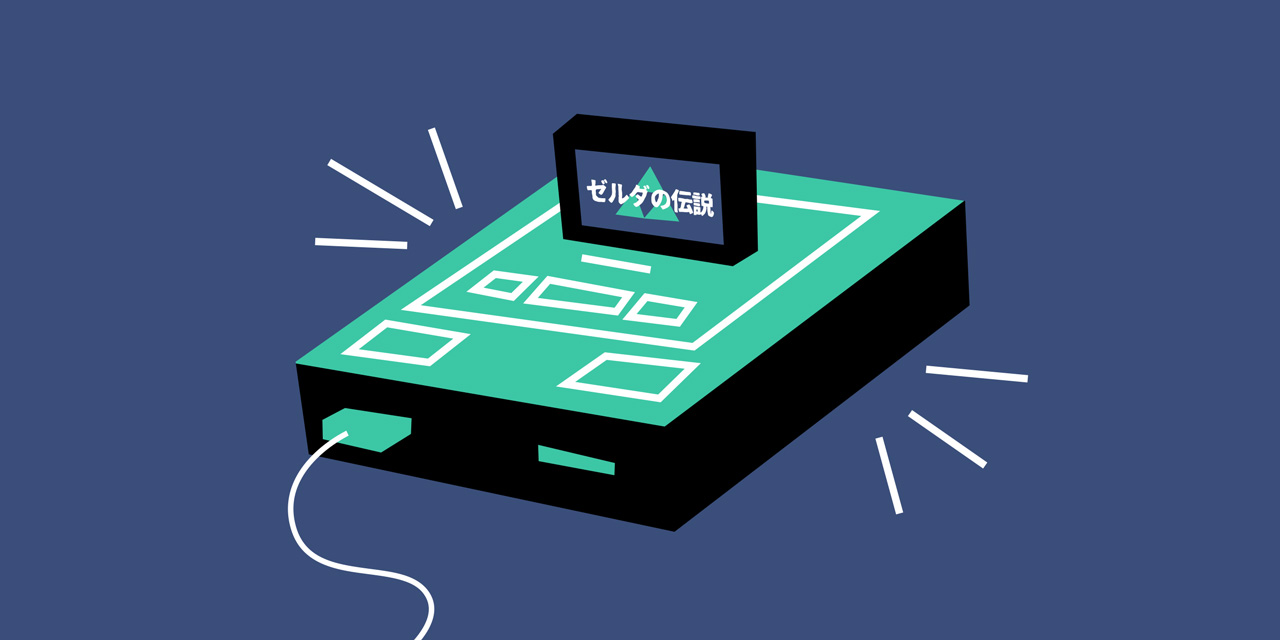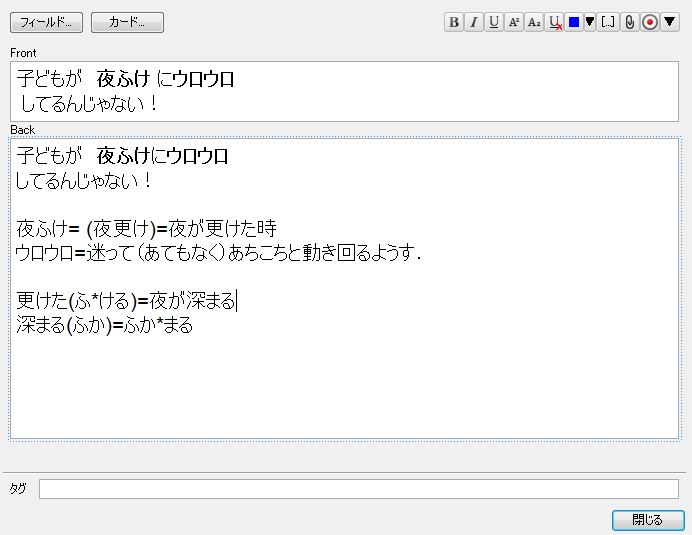In this series, Tofugu asks learners what Japanese learning resources and methods they use to study and why. Today, we talk to James, founder of ALT Insider.
We hope you'll be able to use his recommended tools and techniques to improve your Japanese. The floor is yours, James!
When I first arrived in Japan, I had all kinds of fun. I met people, ate, drank, and socialized. It was a blast.
It wasn't long before I realized I was basically a giant baby unable to function in an adult world. I always needed a Japanese friend to help me with problems and life issues. This is not the situation I wanted, so I decided to learn how to take care of myself by studying Japanese as much as I could. I passed JLPT N2 after a few years. Hopefully I can say the same for N1 in the near future.
How did I do it? I used one main resource and a few techniques to break out of my baby stage and reach a level where I could function like a complete human being while living in Japan. I'm going to share these resources and techniques with you, so you can do the same.
- Study Japanese with SRS – Spaced Repetition Software
- Children's Japanese-only Dictionary
- Video Game Scripts Available in English and Japanese
- Watching Movies Using Only Japanese Overdubs
- Text Chat with Japanese People Online
Study Japanese with SRS – Spaced Repetition Software

Humans are creatures of habit. To know what you'll do tomorrow, look at what you're doing today. So, the best thing you can do when it comes to learning Japanese is to make sure you develop a routine that involves a lot of, you guessed it, learning Japanese.
Enter spaced repetition software (or SRS).
SRS is basically flashcards cranked up to 11 (I use Anki). The system makes it easy to create notes, add references, tag, organize, and reorganize your cards on a regular basis. Fleshing out a massive deck of SRS cards was a huge leg up for me in my quest to learn Japanese.
To get started, you're going to need to make some cards. Luckily, sources of potential cards are everywhere.
Movies, manga, video games, Japanese websites, signs on the road (if you're in Japan); they all have grammar, kanji readings, or vocabulary you'll want in your brain. If you have a smartphone, you can snap a photo of the target language material while you're out and about, then look up for the translations when you get home with the context and format preserved.
Here's how that process worked for me:
Let's say I take this picture during a walk to work (it's from Tofugu's Capybara Onsen travel article, but for the sake of providing an example, let's say I did).

The first thing I'll do is identify the Japanese characters on the poster I want to study. There is quite a number of Japanese here that I didn't know how to read when I first arrived in Japan, so this poster alone can give me a lot of cards. However, I found it's best to limit yourself to one or two language items so you don't feel overwhelmed or de-motivated.
The sentence on the bottom left looks perfect for an intermediate learner – it's short, simple, and easy to contextualize.
カピバラさん フェスタ 開催!
For this sentence, I want to learn the kanji kaisai 開催, so the first thing I'll need to do is find the kanji readings and definition. In my experience, jisho.org is the best site to do this for someone whose Japanese is beginner or low level intermediate.
After getting the readings and definition (using the radical search feature if necessary), I pop the sentence into the front or "question" side of a new Anki card, exchanging the part I want to learn with the hiragana readings like so:

And then, on the back or "answer" side of the card, I'll put in the complete sentence with the definitions. I'll also add the picture to keep the context.
Here's what a finished example would look like with both Beginner and Intermediate/Advanced versions included:

When this card becomes "due," meaning I have to review it, I write the full sentence out with the kanji instead of the hiragana with the asterisks. If it was easy for me to remember and write, I hit the "easy" button, which means I'll see it again in four days or longer. If it's more difficult, I hit the "good" or "hard" button that makes the card show up sooner.
I know that seems like a lot of steps, but once you're on a roll, each card only takes a few minutes to create and even less to review.
After a full year of consistent and daily electronic flashcard practice using the spaced repetition software (SRS) Anki, I reached a point where my day didn't feel complete anymore until I did my SRS reviews. A bad day for me was adding only 25 cards and reviewing only 100. On a good day it was more like adding 100 and reviewing 300+.
Of all the things on my list, my consistent and daily SRS routine is what helped me to improve my Japanese above all else.
Here is the SRS I used, along with some kanji paper:
Children's Japanese-only Dictionary

Looking up words in a kids J-J dictionary provides a lot of Japanese to read, and even a few extra vocabulary words to add to the SRS.
Bilingual dictionaries are great for tourists and beginners because they give you a quick answer to your question.
For example, if you plug "馬" into the J-E dictionary jisho.org, you'll get "horse." Nice and simple. This kind of direct translation answer is fine when you're traveling, but it's not the best way to learn a language. Trust me.
Making the switch to a fully Japanese dictionary really helped improve my vocabulary. While a true 10,000+ page Japanese-to-Japanese dictionary can be daunting for intermediate learners, a dictionary aimed at children is perfect for this purpose as the learning curve is dramatically reduced.
When using a simple online J-J dictionary like Sanseido, instead of seeing "馬 = horse," you get:
馬 = 家畜の一.顔が長く,足が速い
Looking up "馬" in a simple J-J dictionary made for kids provides a lot of Japanese to read, and even a few extra vocabulary words to add to the SRS (What does "家畜" mean? Better make a new card…). And the great part is you can do it without leaving your "Japanese" headspace.
This method can lead you to all sorts of fun and educational rabbit holes that help you learn the language, not just translate words to other words.
Here are some children's Japanese-only dictionaries I use:
Video Game Scripts Available in English and Japanese

If you study Japanese from materials you find interesting, you'll have more fun studying. Period.
Video games are a big reason I first got interested in Japan, so using them as a study tool was natural for me. While simply playing games in Japanese isn't a bad idea, to really focus and take it to the next level, I use video game story scripts. They're a great source of reading material, and a way to generate fun content for your SRS.
I love The Legend of Zelda: A Link to the Past, a landmark game for the Super NES. My SRS has 348 cards containing parts of the game's script, which I spent weeks going through. Since I know the game so well, the context and "feel" of these sentences helped me make sense of content that was probably above my head grammar-wise.

Here's an actual card from my deck. I'm using a J-J dictionary and there is no kanji in the sentence I don't know, so I'm only studying the vocabulary 夜ふけ and ウロウロ, which I put in bold to remind myself what part of this sentence I'm learning. As you can see, there were two words I wasn't sure about in the Japanese definition for "夜ふけ," so I added them to the card as well.
I know this game inside and out, so when this card comes up in my deck my mind immediately goes to the scene where the guard yells at Link at the beginning of the game. I understand the context and situation instantly, and being mentally "transported" for a moment is always a nice change of pace during long Japanese study sessions.
Here are some places I get video game scripts in Japanese:
Watching Movies Using Only Japanese Overdubs

While video game scripts and dictionaries were my library, TSUTAYA (a movie rental store in Japan) was my theater. I did rent Japanese titles from time to time, but I found English movies with Japanese overdubs were the best study tools for my level at the time.
Using them guaranteed I was only watching movies I'm interested in, and perhaps more importantly, it made certain I knew exactly what was going on in the story. This meant I wouldn't get bored or lost.
I used movies in two ways:
-
While doing household chores, cooking, or another activity around the house, I would put on a movie to play in the background. Having my "theater" open all the time meant I was fully immersed in Japanese conversations throughout my day. I can still hear Scar telling Mufasa " 王よ、 永久に 幸あれ" in my dreams from the thousands of times The Lion King played in my apartment.
-
When I was actively studying, I would add cards to my SRS from the movie while watching with Japanese overdubs. If there was anything I didn't understand or couldn't quite catch, I would hit pause, flip on the Japanese subtitles, and add that line to my SRS. For this reason, my SRS boasts over 250 cards from The Lord of the Rings trilogy. Needless to say, my pause button got a bit of a workout, and yours should as well.
Watching movies I knew well guaranteed I knew exactly what was going on in the story.
That said, watching only English movies with Japanese overdubs should not be a permanent thing. Once you start improving your listening past beginner levels, you should make the move to watching mainly Japanese movies and TV. While localized Western media does offer authentic Japanese listening material, it's just that: localized Western media. This means it's not as "Japanese" as made-for-Japan media. With Japanese movies and TV, you are guaranteed the situations, tense, speed, and context are all 100% dripping in the language you want to learn.
After "graduating" from non-Japanese materials, it was a nice feeling to walk out of TSUTAYA with only Japanese movies for the first time. Once you think you're ready to make the jump (or even a bit before that point), dive in and soak in the sweet, authentic Japanese sounds as much as you can.
Text Chat with Japanese People Online

Another big part of my daily Japanese study routine was logging into the now defunct SharedTalk and chatting online with people. While Koichi sang the praises of voice chat in his article from this series, written text chat was the game-changer for me.
With text chat, you control the pace of the conversation. You are also much more in control of the "route" of the exchange, which is huge when you're at an intermediate level. Just learned a new word you want to try out? Text chat is a great place to shoehorn it into a conversation before you attempt to use it out in the wild.
Having said that, easily the best part of text chat was the ability to copy and paste the conversation. Talking to someone live and in-person is the ultimate goal of learning Japanese, but it's a bit awkward to tell someone to write down what they just said so you can put it into your SRS. With text chat, it's just a mouse click away. I have hundreds of Anki cards made from my conversations with native Japanese speakers, thanks to good ol' text chat.
Here are some good alternatives to the now-closed Shared Talk:
As you can see, I'm a huge fan of the SRS lifestyle (and my 7,995 card deck). It was the best way to learn Japanese for me. If you take nothing else from this, I recommend giving Anki or another SRS application a serious try. They are amazing tools just waiting to help you unlock your learning power.
Strive to grow beyond the illiterate man/woman-baby stage, like I did. Onward and upward towards your linguistic independence, with the help of SRS!
